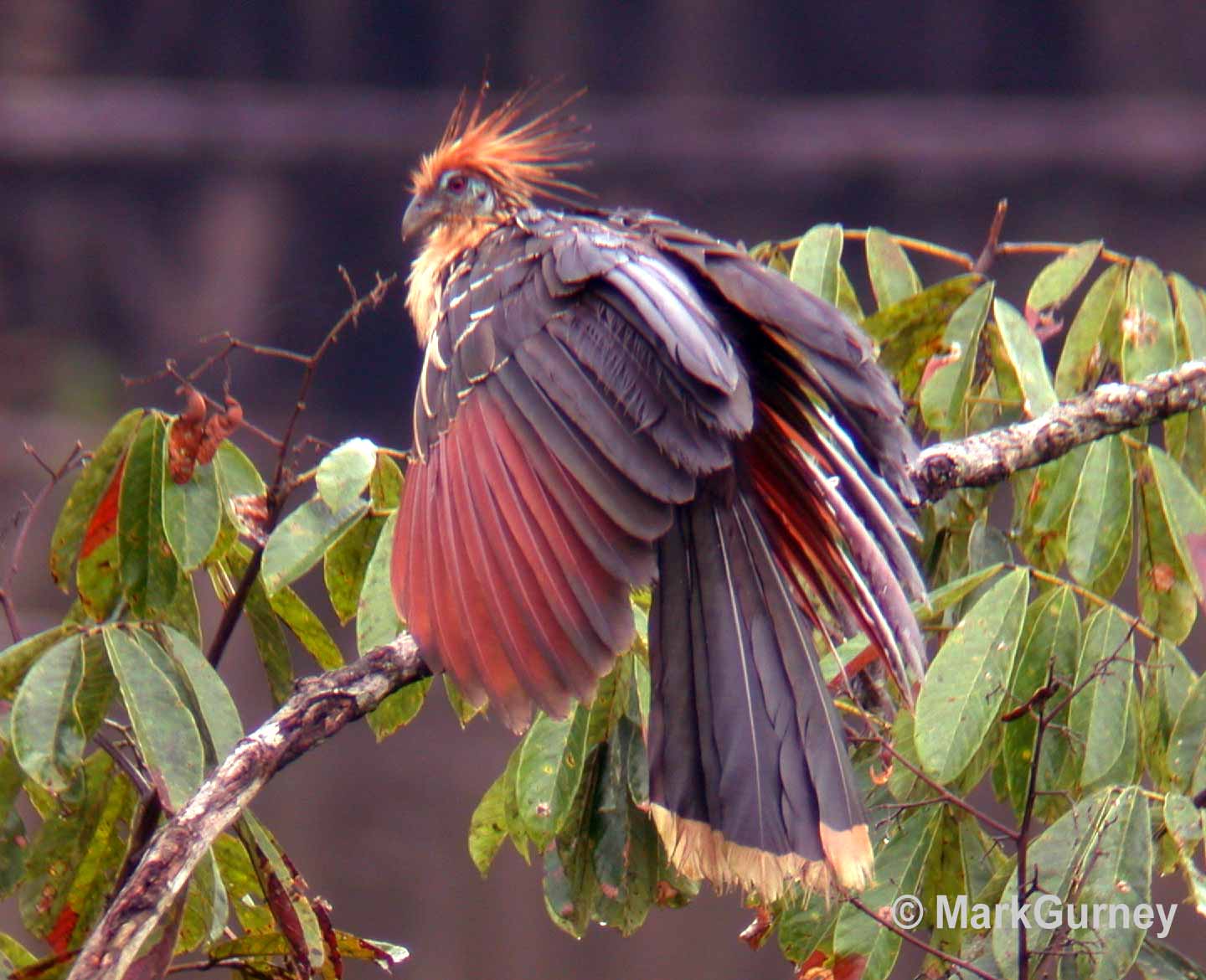Hoatzin ( Opisthocomus hoazin) Class: Aves, Order: Currently in Debate, Family: Opisthocomidae, Genus: Opisthocomus, Species: hoazin
IUCN Status: Not Listed
These unique birds are considered a relic from the age of the dinosaurs. They represent the only living member of the family Opisthocomidae, and its close relatives probably died out long ago. These chicken-sized birds weigh less than a kilogram (2 lbs) and have a body length of 61-66 cm (24-26 inches). Their heads are almost bare with a red crest on top and blue flesh around their red eyes. They have olive streaks on the back of their necks and off-white throats and breasts. Their tail feathers are black with lighter tips. The rest of their bodies are chestnut colored.
Hoatzins inhabit the lowlands of the Amazonian Basin. Their ideal habitat is slow moving or standing water such as swamps, mangrove or flooded forests, or oxbow lakes (which are formed when rivers change their course and the former river channels become isolated). They make their nests on low or mid-level branches in trees that overhang water. Exposed nests tend to be susceptible to predator birds. These birds are known to live in territorial groups with up to 28 nests in a single tree.
These birds feed on the leaves and shoots of marsh plants. Once eaten, this vegetative matter is ground and fermented in a stomach-like organ known as a crop. This digestive process gives the birds a musky odor. Baby Hoatzins have claws on the end of each wingtip that serve as a means for climbing tree branches to get back into the nest when they fall. This feature is a remnant from what is considered the first species of bird, Archaeopteryx, which lived about 150 million years ago. Hoatzins communicate through unusual sounds that resemble wheezing, grunting, growls, and hisses.
Female Hoatzins lay two or three eggs at a time in nests built out of pencil-sized twigs. The parents take turns keeping the eggs at a near-constant temperature. These eggs hatch in about 28 days. The young are fed regurgitated plant matter until they leave the nest several weeks later. Hoatzins are considered distasteful by local peoples and thus over-hunting has not been a problem. Habitat encroachment is the primary threat to these birds' well being.
( http://www.rainforestconservation.org/data_sheets/birds/hoatzin.html)
( http://www.montereybay.com/creagrus/hoatzin.html)
( http://www.ecuador-travel.net/information.biodiversity.birds.hoatzin.htm)
( http://www.lastrefuge.co.uk/data/articles/hoatzin_p1.html)
CLICK HERE FOR MORE EXTRAORDINARY
ANIMALS and PLANTS OF YASUNÍ,
THE MOST BIODIVERSE FOREST KNOWN ON EARTH
Yasuní Biodiversity Main Page
|

